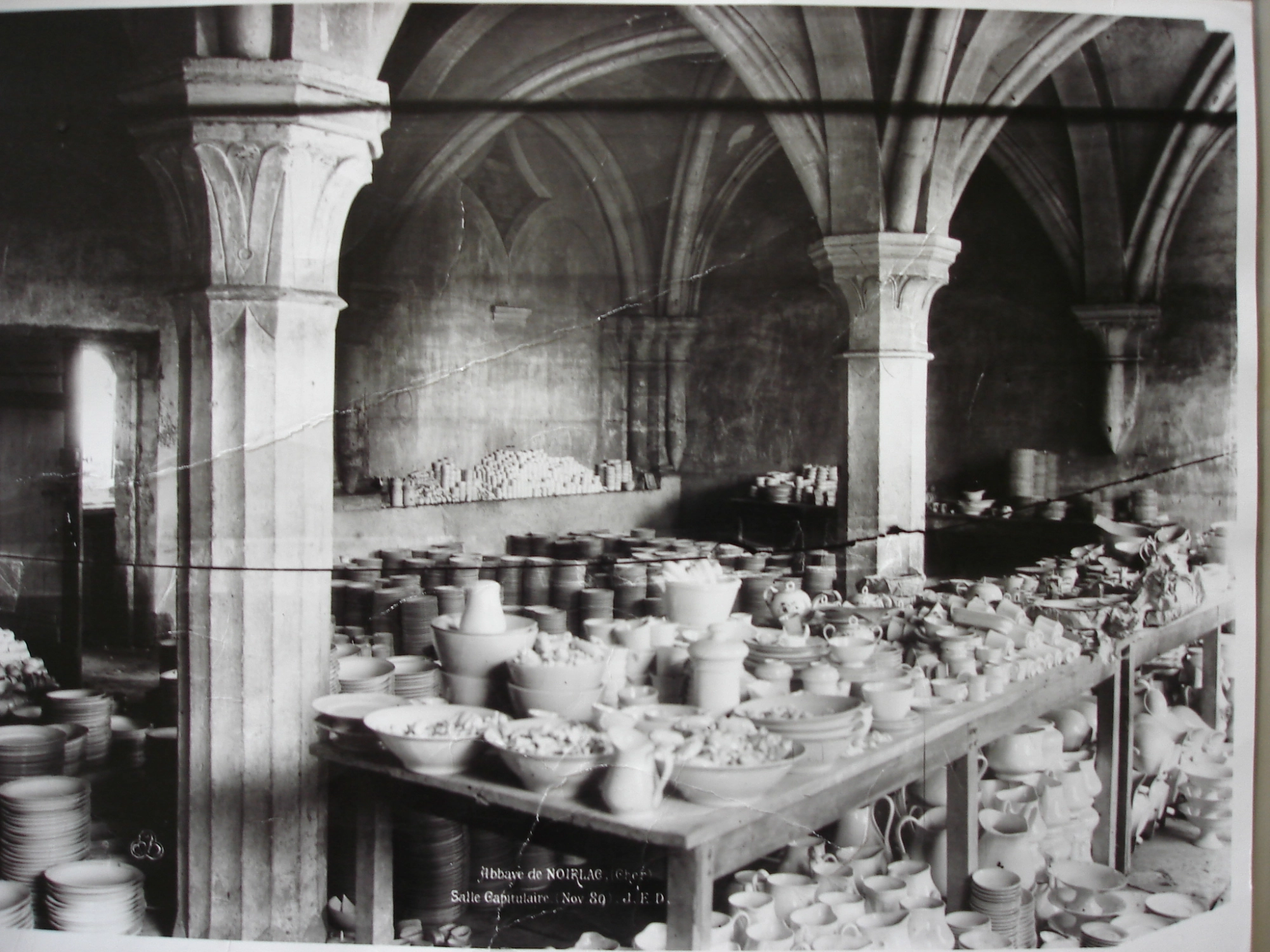A group of monks from Clairvaux laid down the foundations of the Abbey in 1150. Noirlac, a witness to the appearance of the Gothic style in the region, had its heyday in the 13th century. This was followed by a long period of decline for its religious vocation, although it retained an important economic role. It was sold as state property at the Revolution, converted into a porcelain factory in the 19th Century, and acquired in 1909 by the Cher department, which restored it entirely.
Today, it offers its visitors the purity of architecture and the serenity of its white stone, revealed by the light filtered by the contemporary stained-glass windows created by Jean-Pierre Raynaud.
The contemporary gardens, imagined by landscaper Gilles Clément, highlight the harmonious link between the buildings and their natural environment, inviting visitors to wander through them.
As a Heritage Site for Culture since 2008, the Abbey is a recognised hub for cultural and artistic exchange, while remaining a major tourist location open to visit all year round.
_______________________________________
1136 : Settlement of a Cistercian community from the Clairvaux (Aube) at a location then called "la Maison-Dieu".
1150 : Donation from Ebbe de Charenton as a financial aid to the monks. They were at last able to consider the building of an Abbey.
1189 : The donation was confirmed by a notary in a legal document. The abbey prospered. It received tithes, annuities and income from nobility.
1290 : The Abbey took the name of Noirlac.
1423 : The Abbey was fortified to provide protection against armed groups which were devastating the countryside at this time. A keep, surrounded by moats, was raised in line with the cellar. Late 15th Century: Noirlac’s community experienced a deep moral crisis. There were reports of an apostate* monk and also a murderer.
1530 : Noirlac was placed “in commenda”. From this time, its abbot was appointed outside the community, directly by the King.
1651-1652 : The buildings were seriously damaged during fighting between royal troops and those loyal to the Prince of Condé during the Fronde wars.
1712 : Beginning of reconstruction work. The monks' wing was altered substantially.
1791 : Noirlac was sold for 150,000 pounds, as part of the National Property scheme, to Jean Amable Desjobert, who made the Abbey his second residence for around fifteen years.
1822 : The abbey was converted into a porcelain factory which, in 1854, became part of the Foëcy-based Pillivuyt porcelain group, The convent buildings housed workshops, accommodation, ovens and warehouses.
1837 : Prosper Mérimée visited the Abbey.
1862 : The abbey was officially listed as a historic monument.
1894 : Initial restoration project. The industrial installations were demolished by Abbot Pailler who had purchased the buildings in order to build an orphanage. This project never came to fruition.
1909 : The Cher Département acquired the Abbey.
1918 : The US expeditionary corps camped at Noirlac.
1939 : Noirlac housed Spanish Republican refugees.
1940 : Noirlac was home to elderly people from the Saint-Amand-Montrond Hospice.
1950 : A restoration project was launched, led by historic monument architects Ranjard and Lebouteux.
1980 : The restoration project was finished by architect Jean Dedieu and the contemporary stained-glass windows were created in the church and the refectory in 1977 by Jean-Pierre Raynaud.
2008 : The Abbey was awarded the national label “Centre Culturel de Rencontre” - cultural meeting centre.
2019 : The gardens imagined by Gilles Clément were created.
2024 : Opening of the sound tour of Noirlac Abbey.





